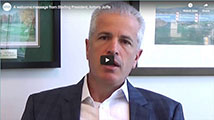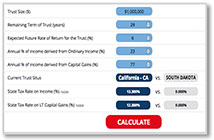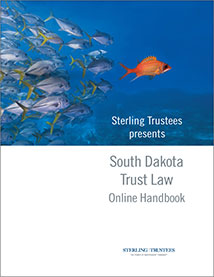Common Questions about Asset Protection Trusts
By Matt Van Heuvelen
Partner, Davenport, Evans, Hurwitz & Smith, LLP
From time to time the news media covers various issues related to the popularity of South Dakota’s trust laws. Recently there has been some coverage on the use of asset protection trusts in South Dakota. This coverage, combined with the challenging financial circumstances brought about by COVID-19, has led to increased interest in the use of asset protection trusts. The following are a few questions received by our lawyers at Davenport, Evans, Hurwitz & Smith, in Sioux Falls, SD. We worked with Sterling Trustees to answer some of these frequently asked questions regarding South Dakota Asset Protection Trusts.
How does an asset protection trust work?
An asset protection trust, which is sometimes referred to as a self-settled trust, is a trust established by an individual (e.g., the “settlor”) who is also a beneficiary of the trust, yet the settlor’s creditors cannot attach the assets of the trust to satisfy the settlor’s personal debts. An asset protection trust must be irrevocable, incorporate South Dakota law, and name at least one South Dakota trustee, such as Sterling, as a trustee, among other requirements. Possible features of an asset protection trust include:
- The settlor can be named as a co-trustee;
- The settlor can reserve certain rights to income;
- The settlor can receive distributions from trust principal, provided those distributions are determined in the discretion of someone other than the settlor;
- The settlor can have a veto power over distributions from the trust;
- The settlor can retain certain powers of appointment;
- The settlor may direct the investments of the trust; and
- The settlor can retain the right to remove the trustee and appoint a new, independent trustee.
What happens if a creditor brings a claim against me and tries to have the claim satisfied from the property of the asset protection trust?
The creditor must prove that the settlor transferred the assets to the asset protection trust with the “intent to defraud creditors.” See South Dakota Codified Laws SDCL § 55-16-9. If the creditor cannot prove this, the creditor cannot bring a claim. In other words, asset protection trusts should only be used to protect assets from theoretical creditors. Once a known creditor has a claim, it is too late to set up an asset protection trust to protect the assets from that creditor. In addition, an asset protection trust should not be used to avoid child support or alimony obligations that existed prior to a transfer to an asset protection trust.
When must a creditor bring a claim against the assets held in an asset protection trust?
The general rule is that the creditor must bring a claim within the later of (a) two years after the transfer to the asset protection trust or (b) six months after the creditor discovered or reasonably could have discovered the transfer to the asset protection trust.
Can I use an asset protection trust to shield assets from my spouse in the event of a divorce?
This can work, provided the settlor is not planning to commence divorce proceedings or is not aware that the settlor’s spouse has commenced or plans to commence divorce proceedings. Furthermore, if the settlor intends to transfer marital property to the asset protection trust, then the settlor must first obtain consent from his or her spouse or, alternatively, give his or her spouse a statutorily prescribed written notice of the transfer.
While an asset protection trust may not be the answer for every individual, it can be a useful tool for protecting assets. For more information on this topic, contact Davenport, Evans, Hurwitz & Smith at 605-336-2880, MVanHeuvelen@dehs.com, or visit davenportevans.com or contact Kevin Batterton at Sterling Trustees at 914-291-5255, kbatterton@sterlingtrustees.com, or visit SterlingTrustees.com
About Sterling Trustees
Sterling Trustees is a privately held, South Dakota-chartered trust administration company. We provide independent trust administration services to high net-worth families, foundations and endowments. Our unbiased trust compliance services are focused on preserving assets for generations to come. As trustees, we never act as investment advisors. By separating these roles, we avoid conflicts of interest, maintain objectivity, and ensure asset growth for future generations. Our clients’ trusts are meticulously managed by our highly experienced trust officer team, using one-on-one communication, unmatched expertise and leading-edge technology to monitor performance








